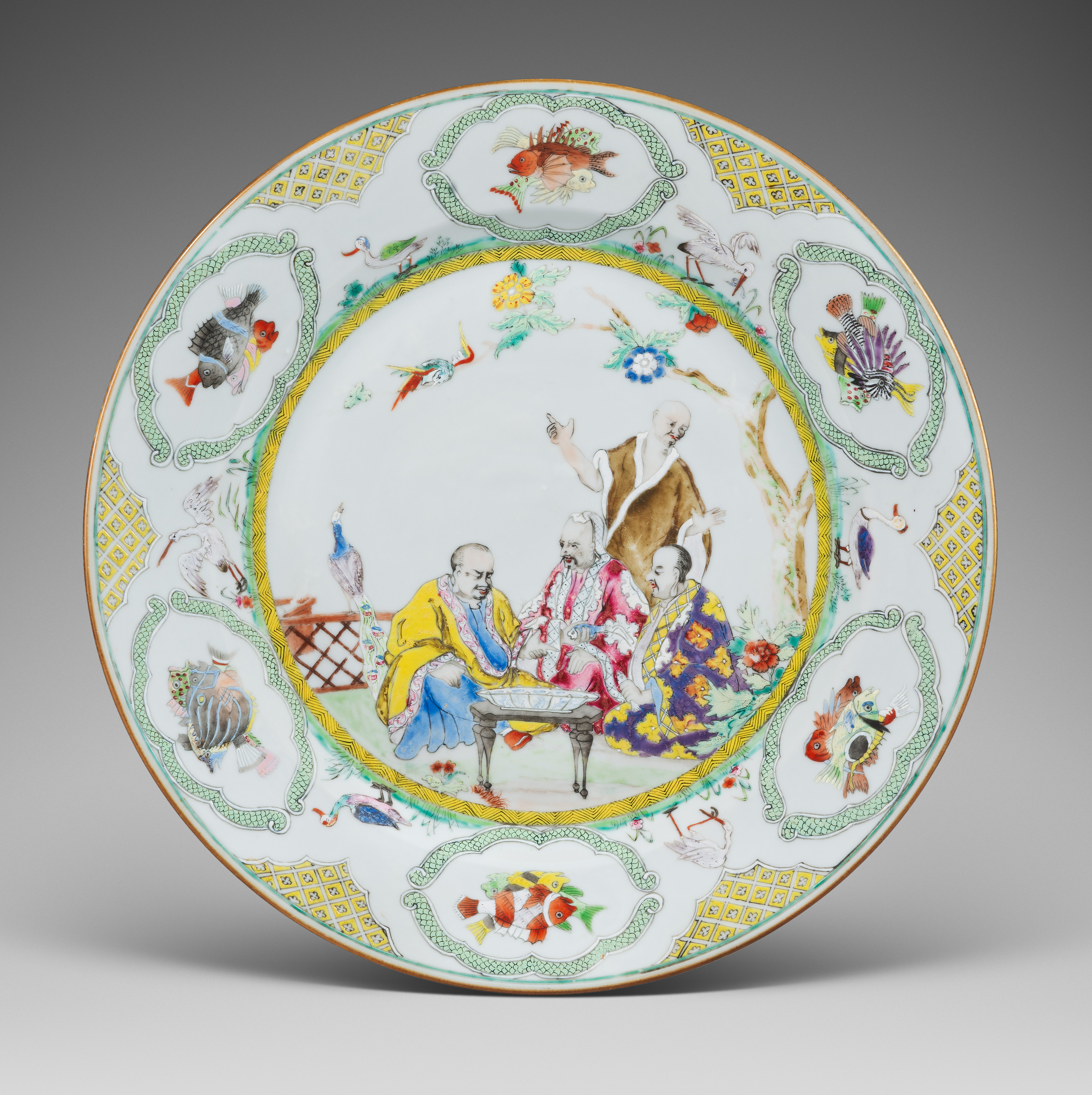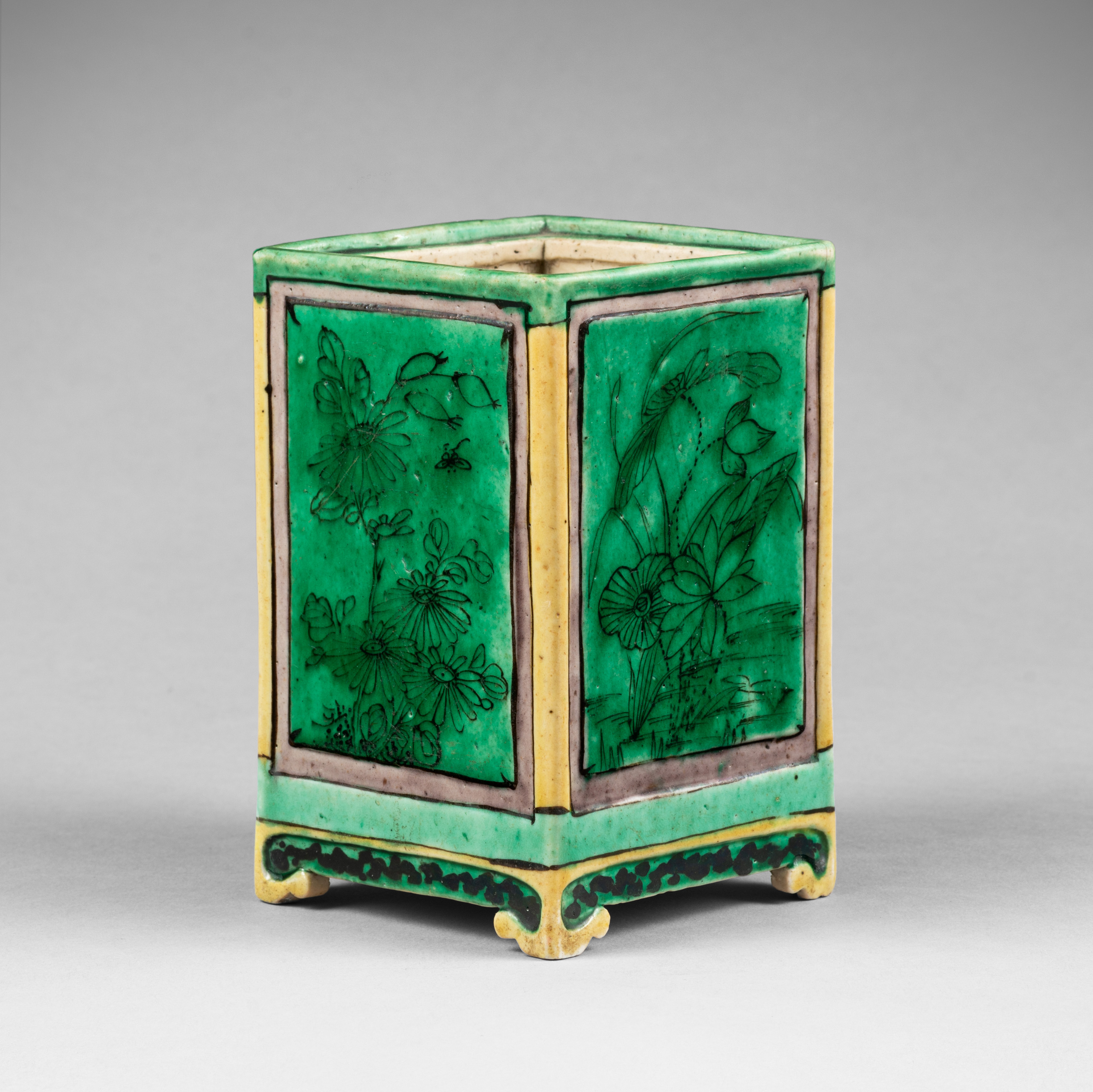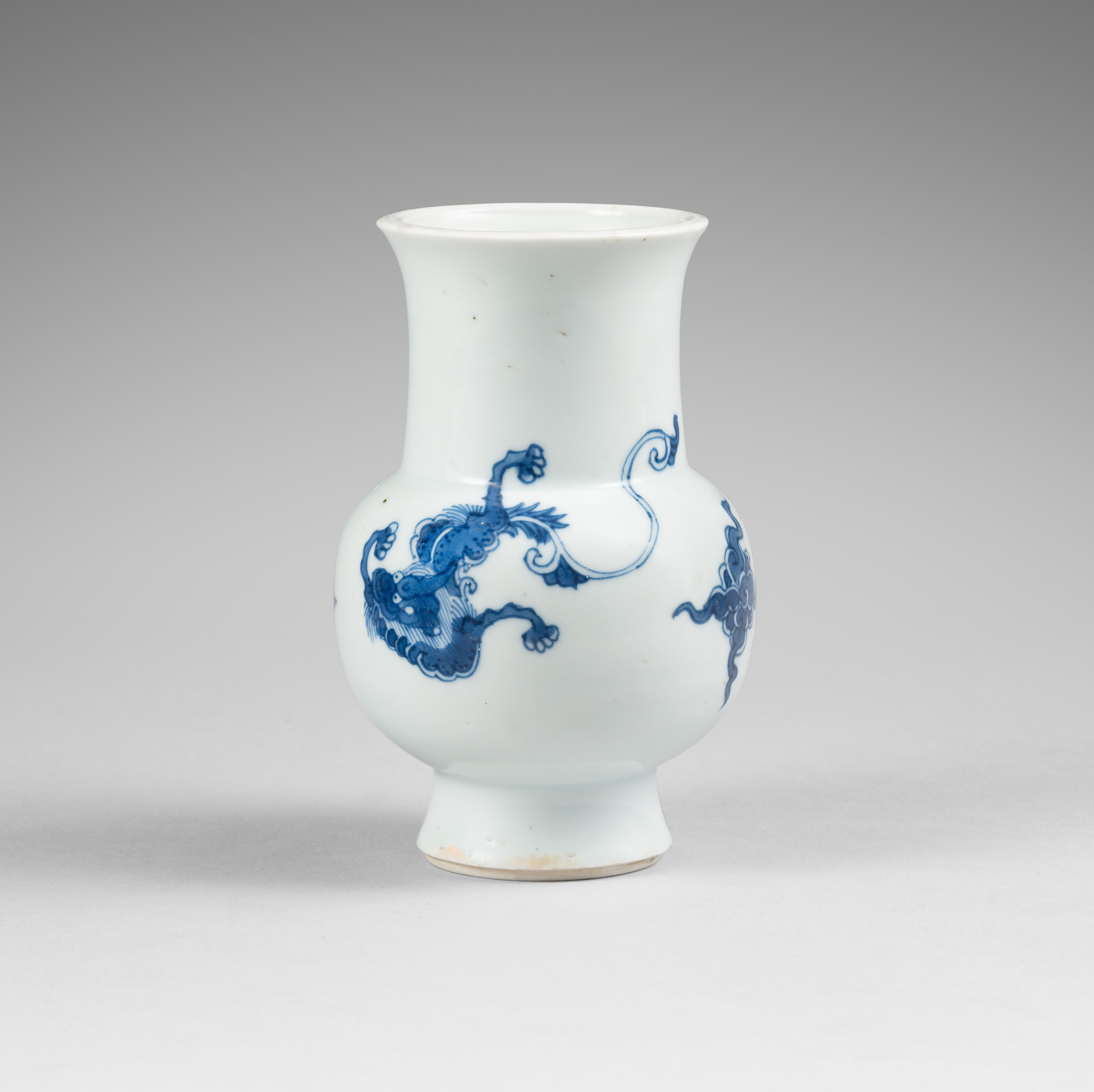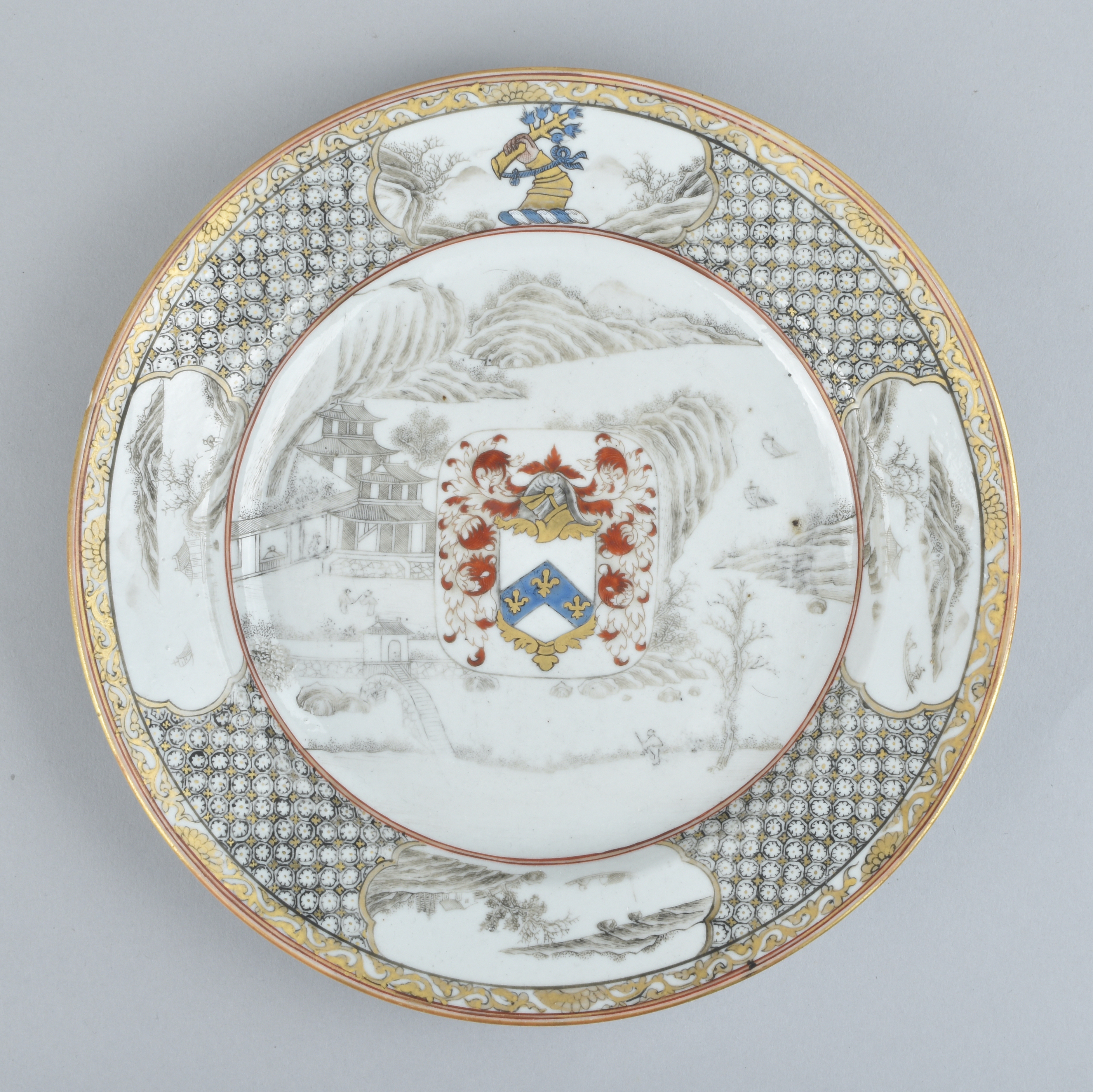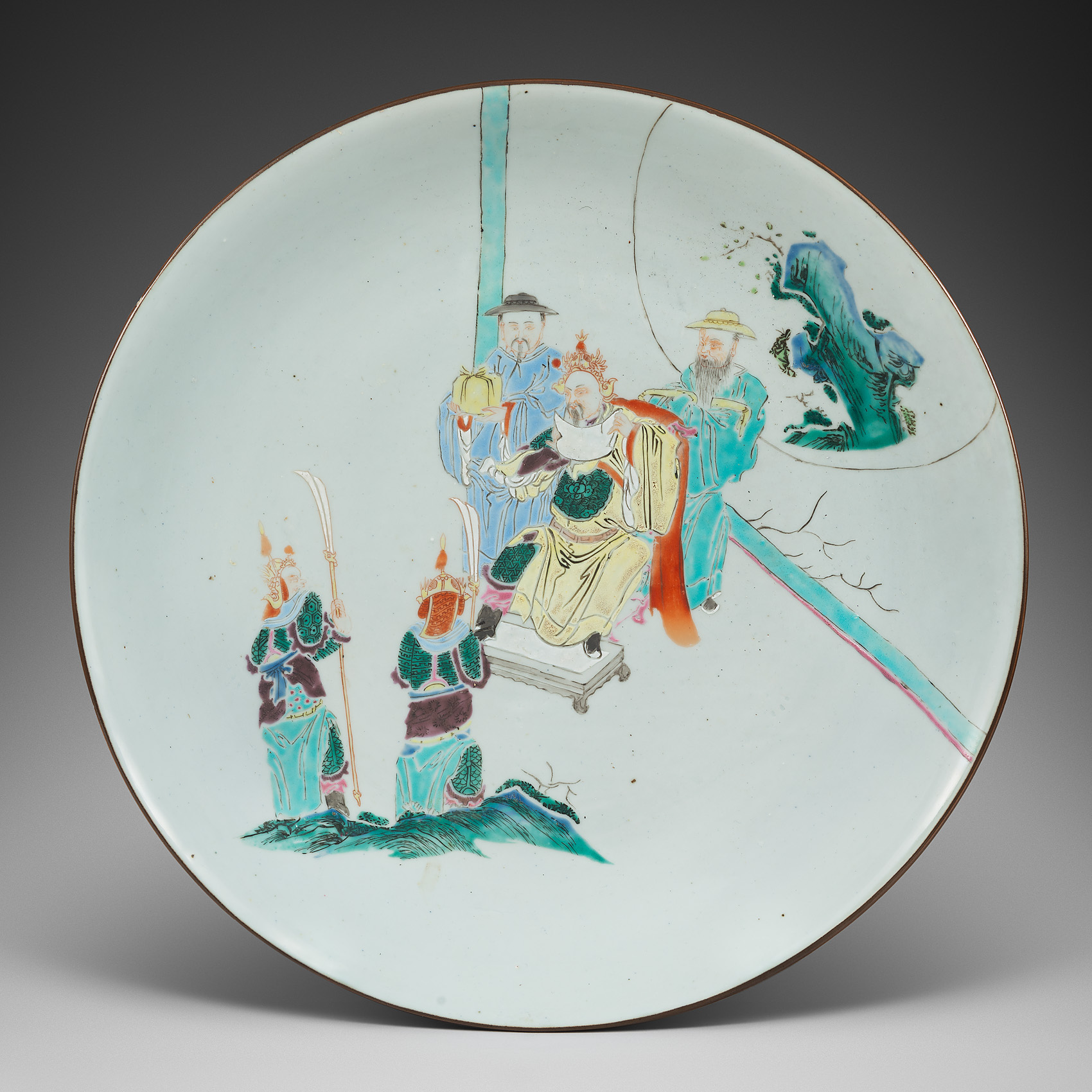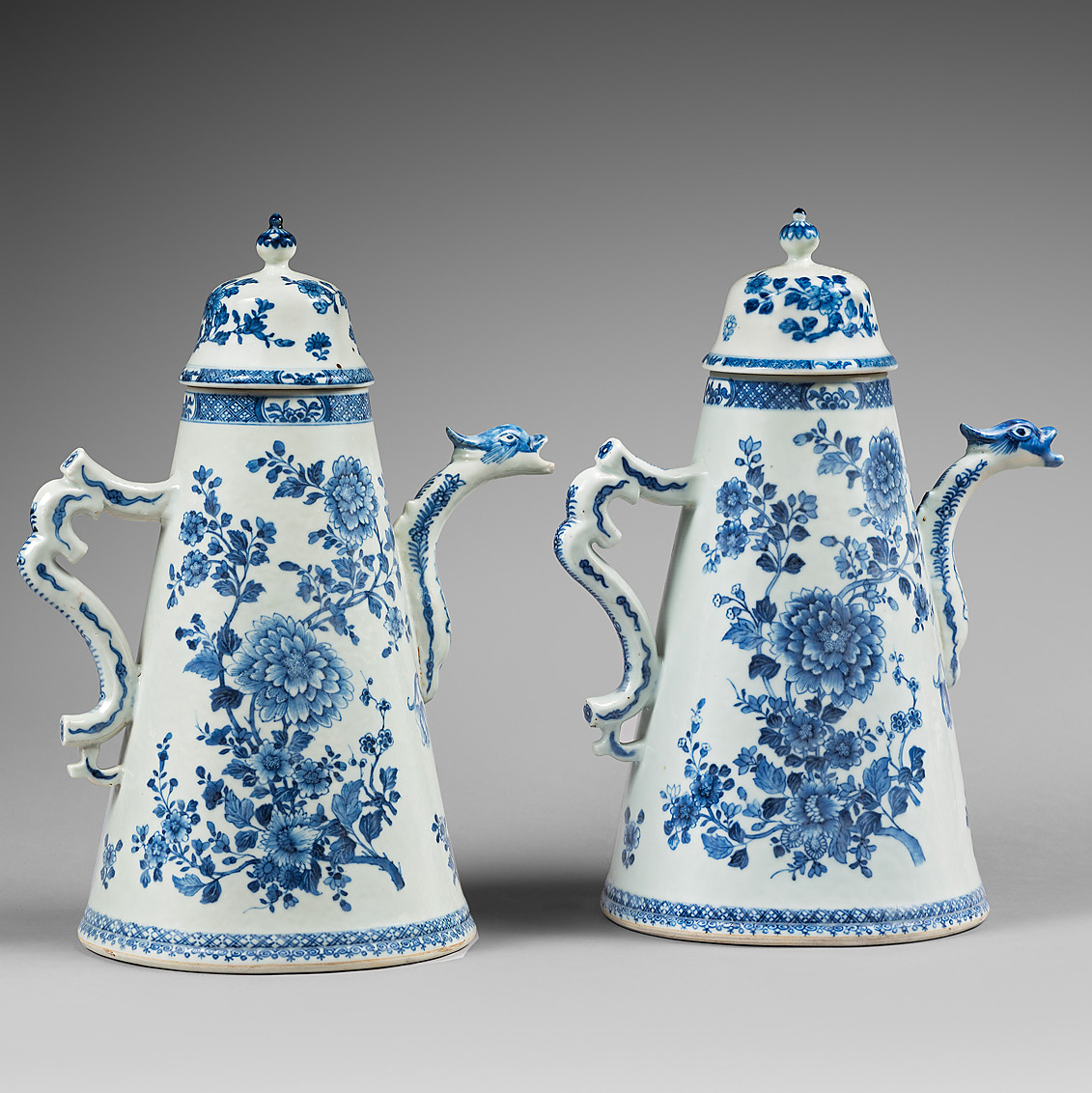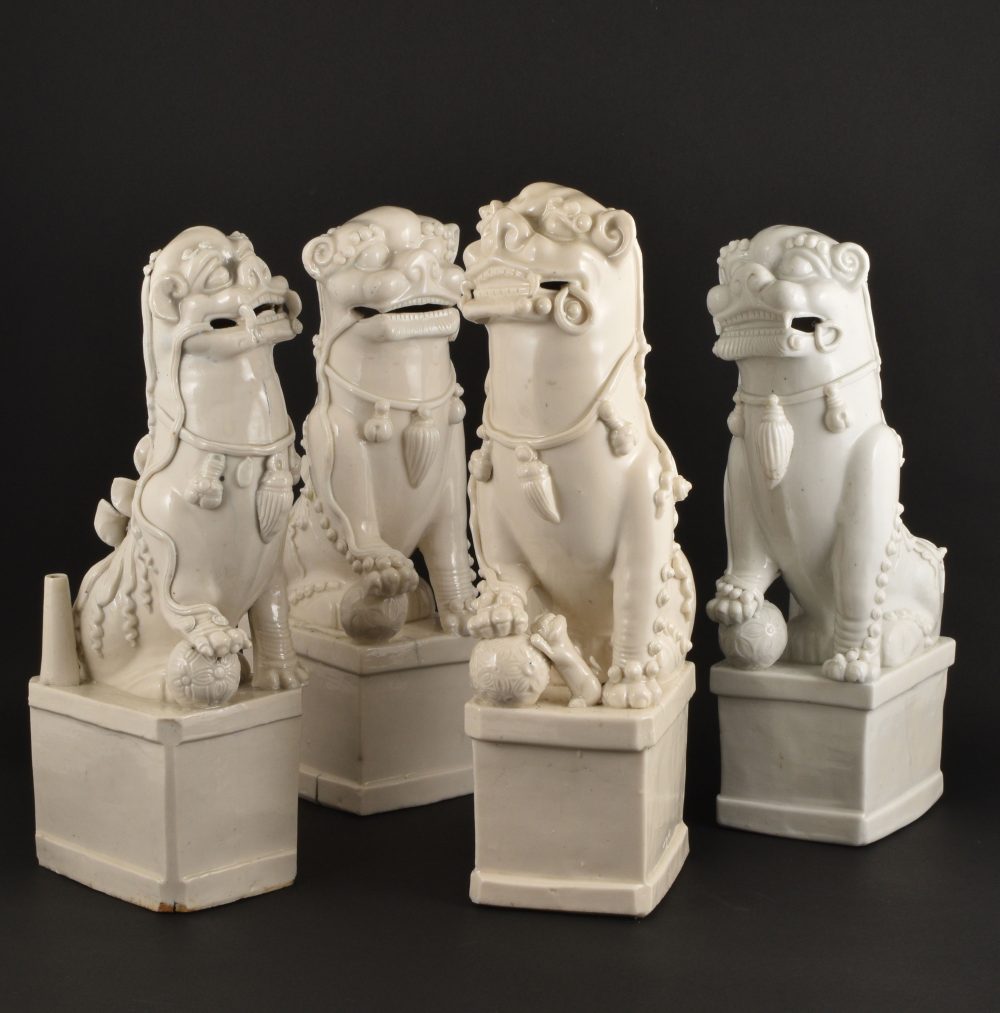
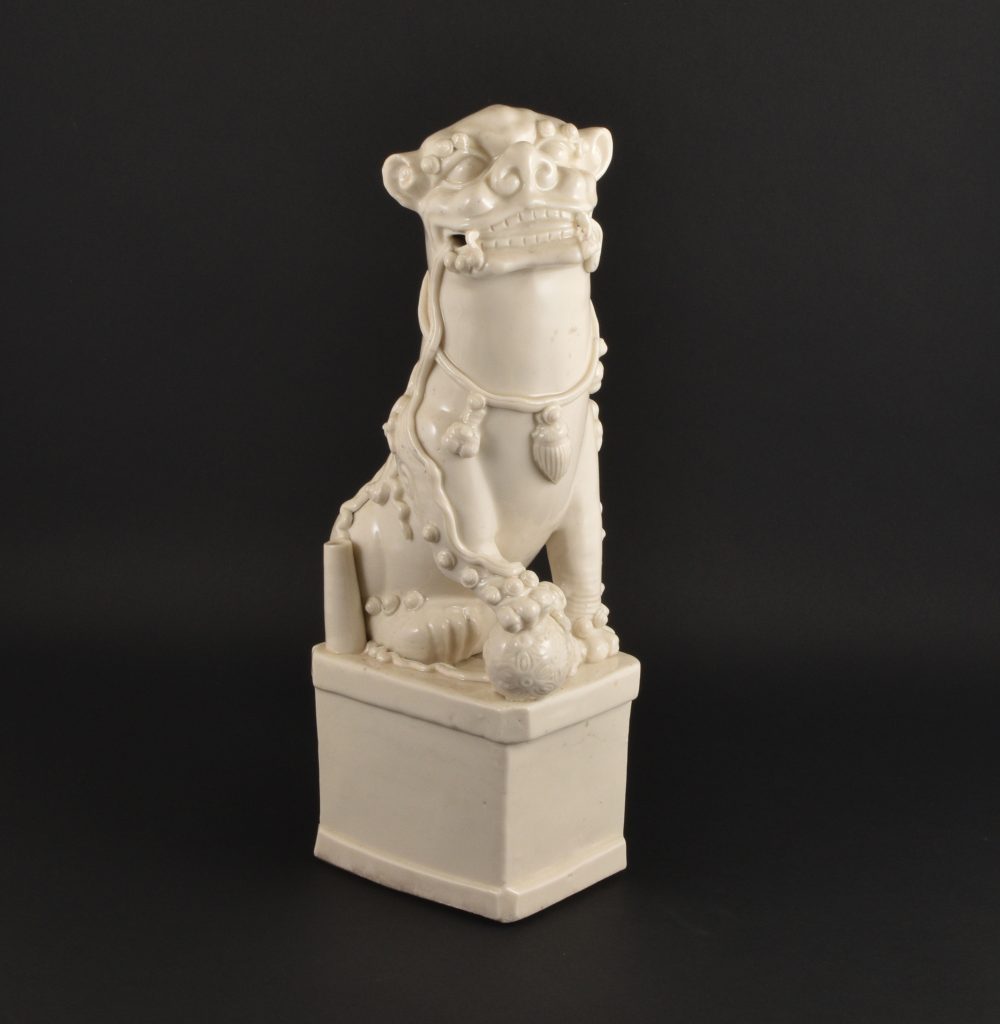
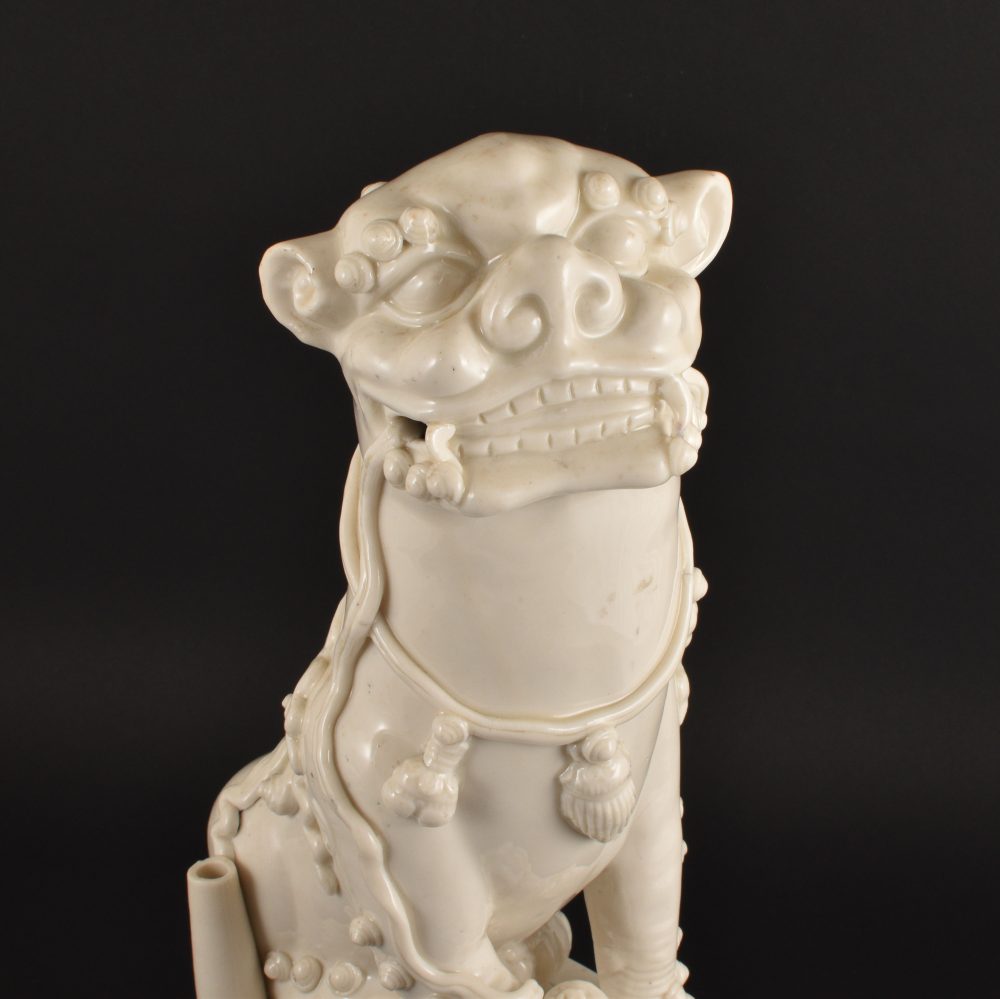
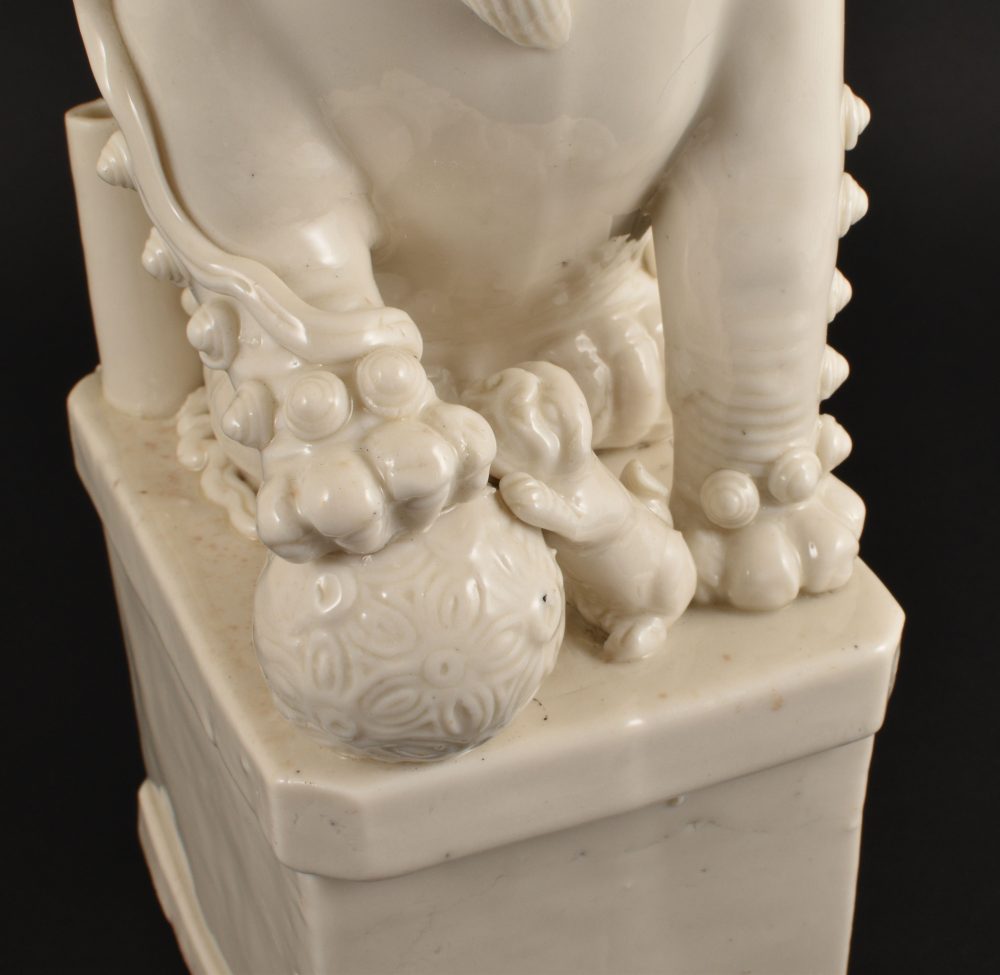
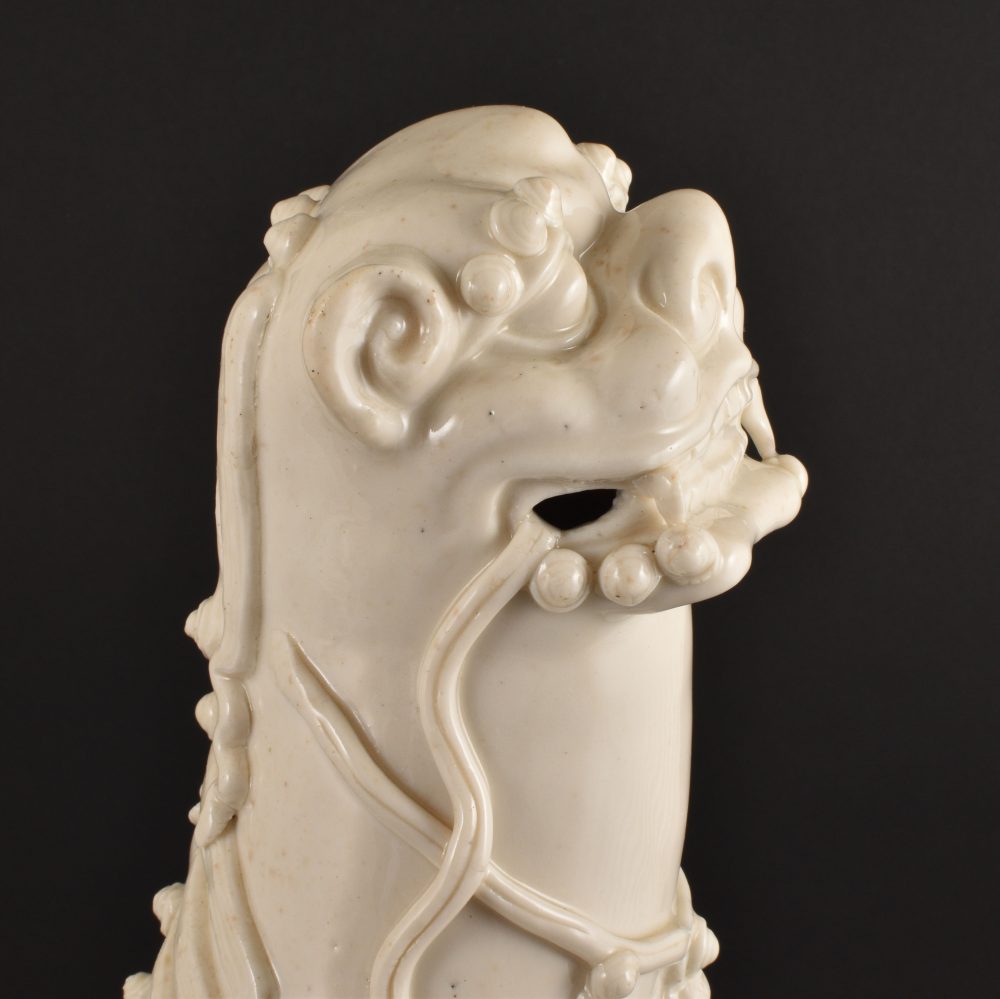
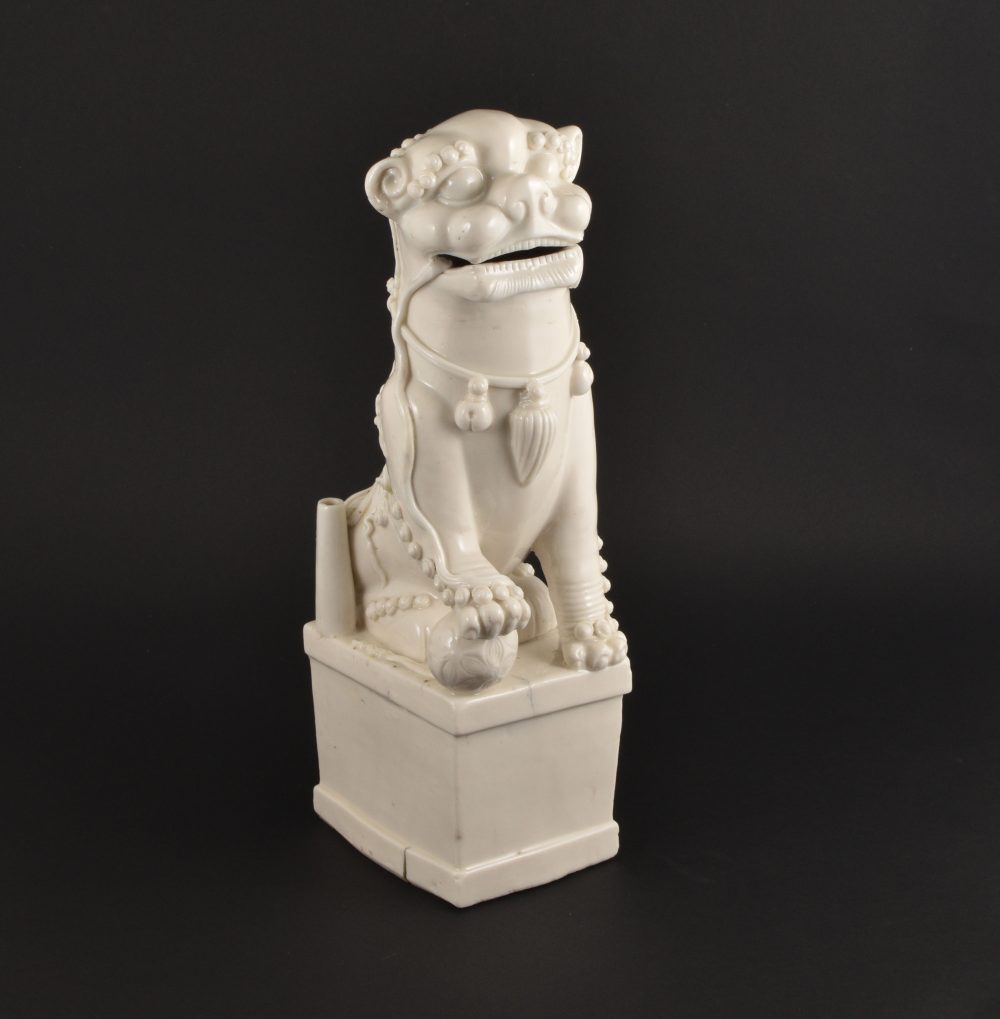
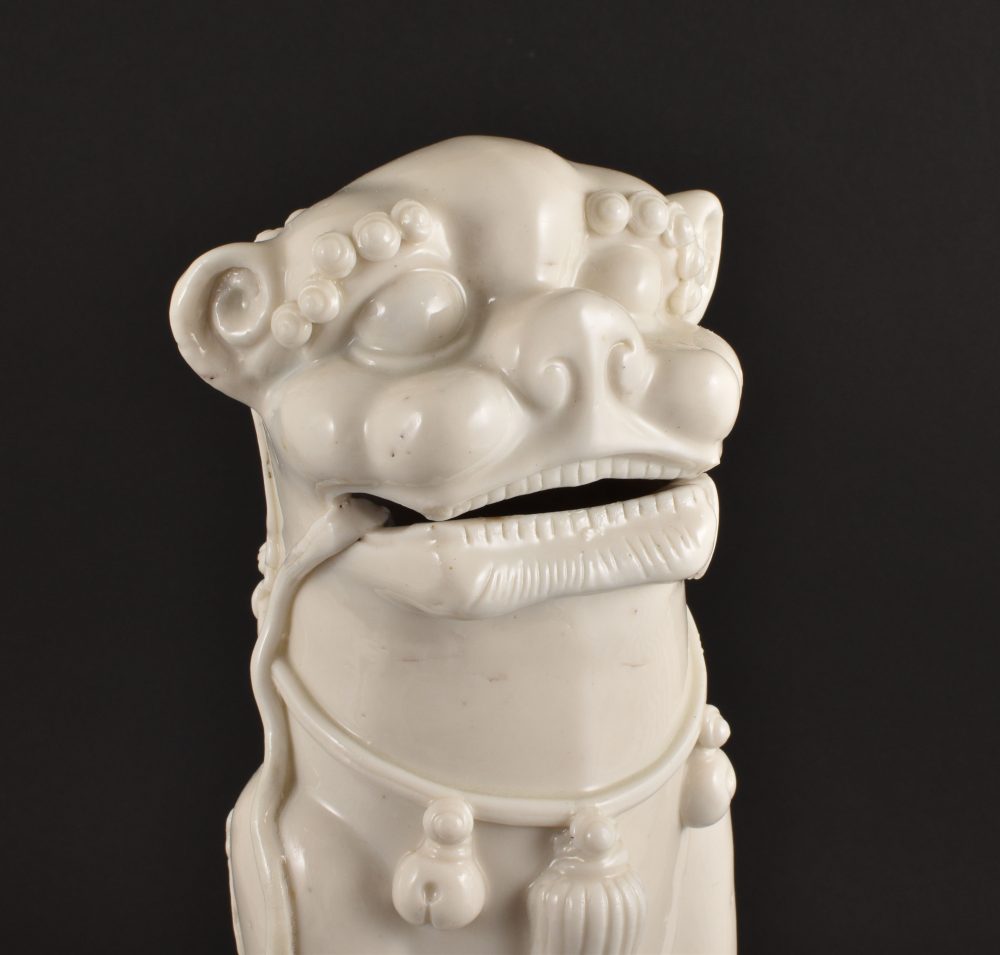
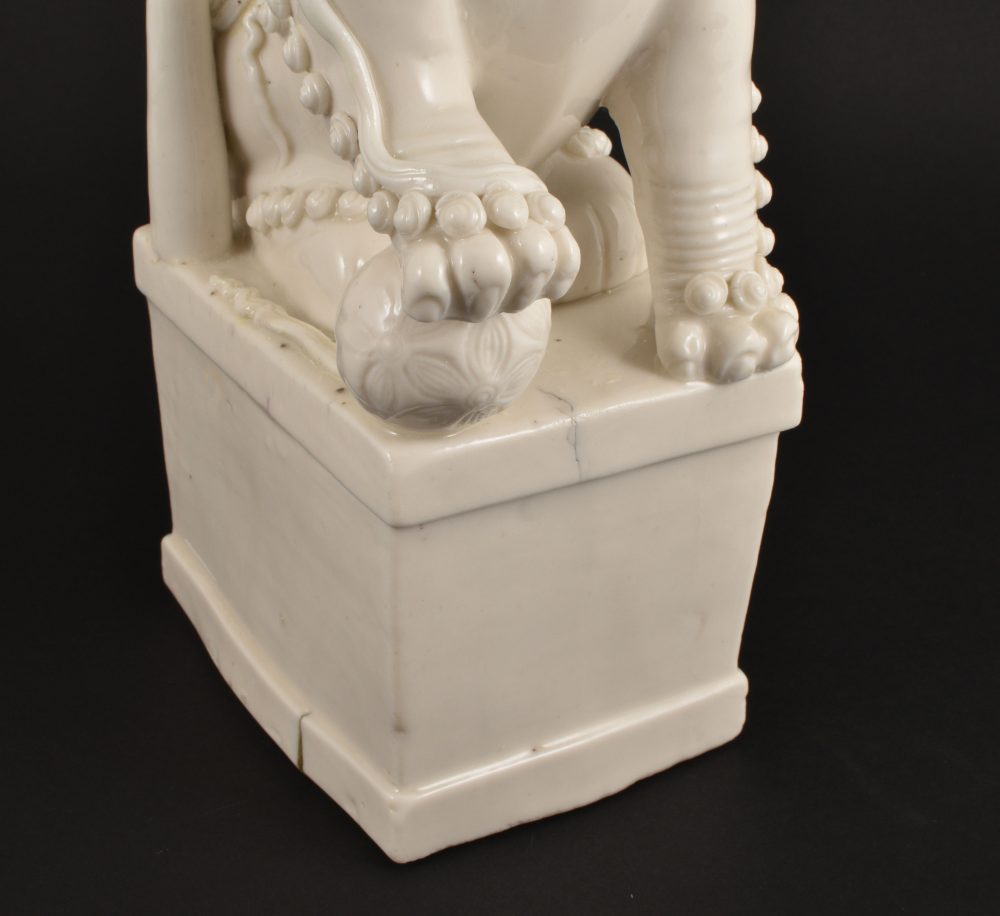
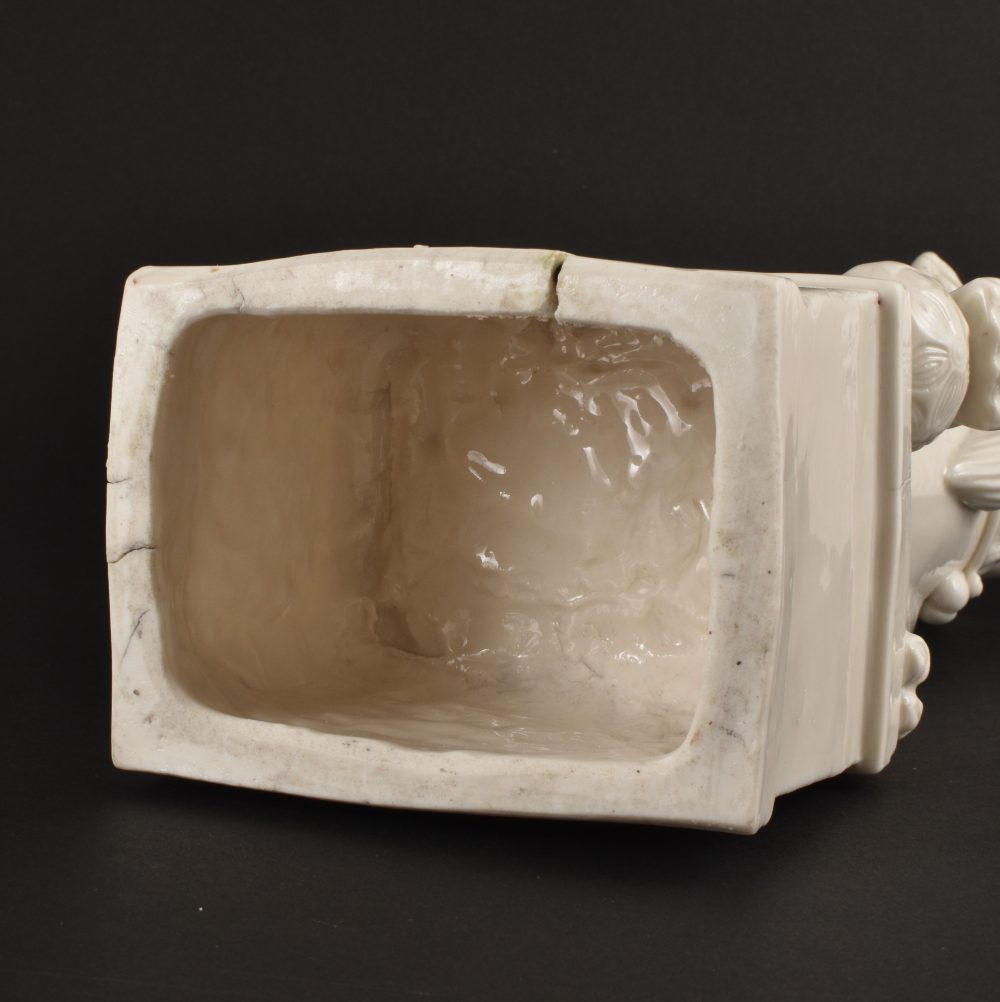
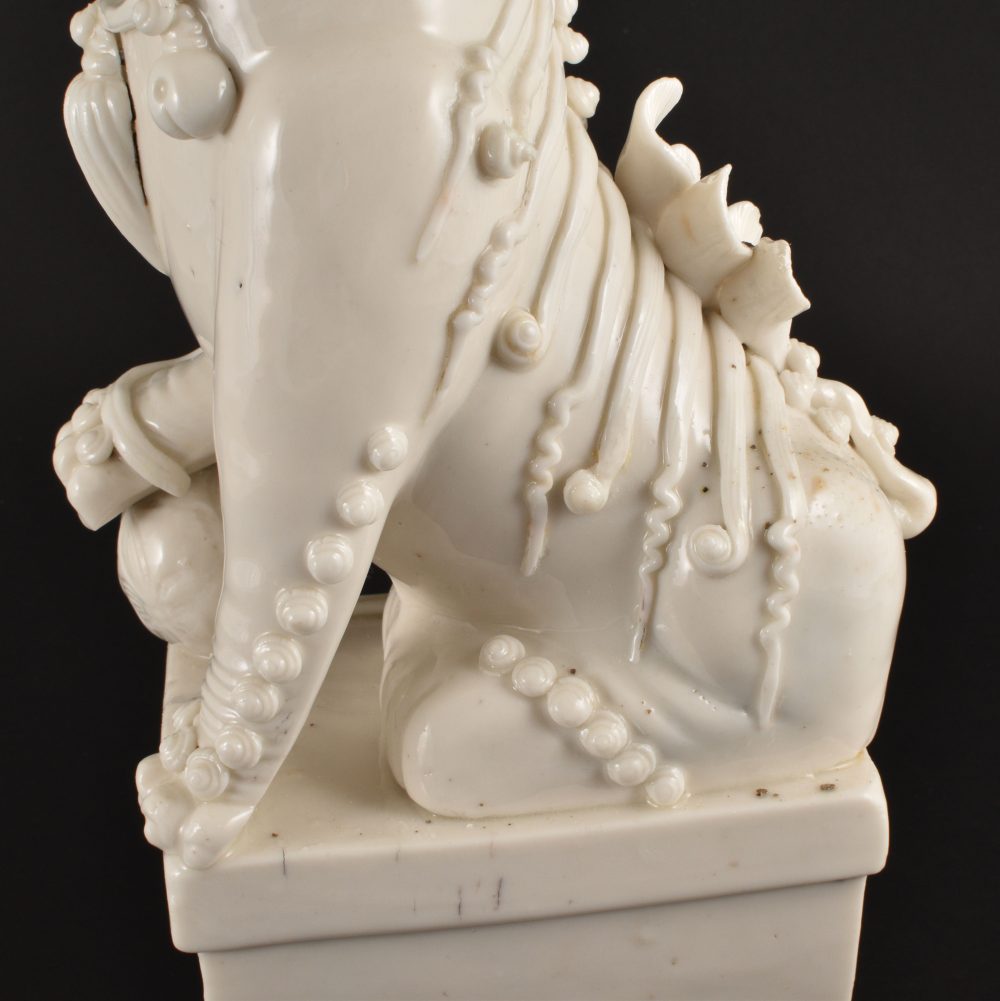
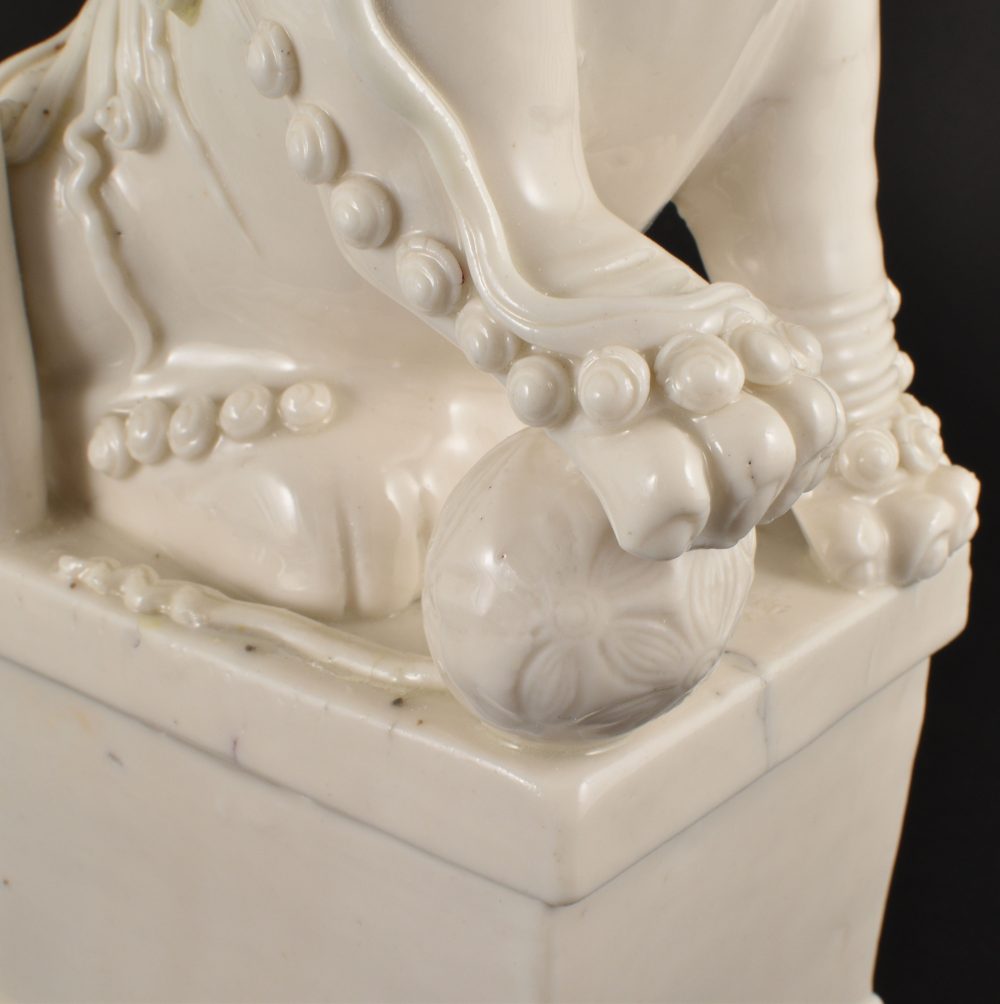
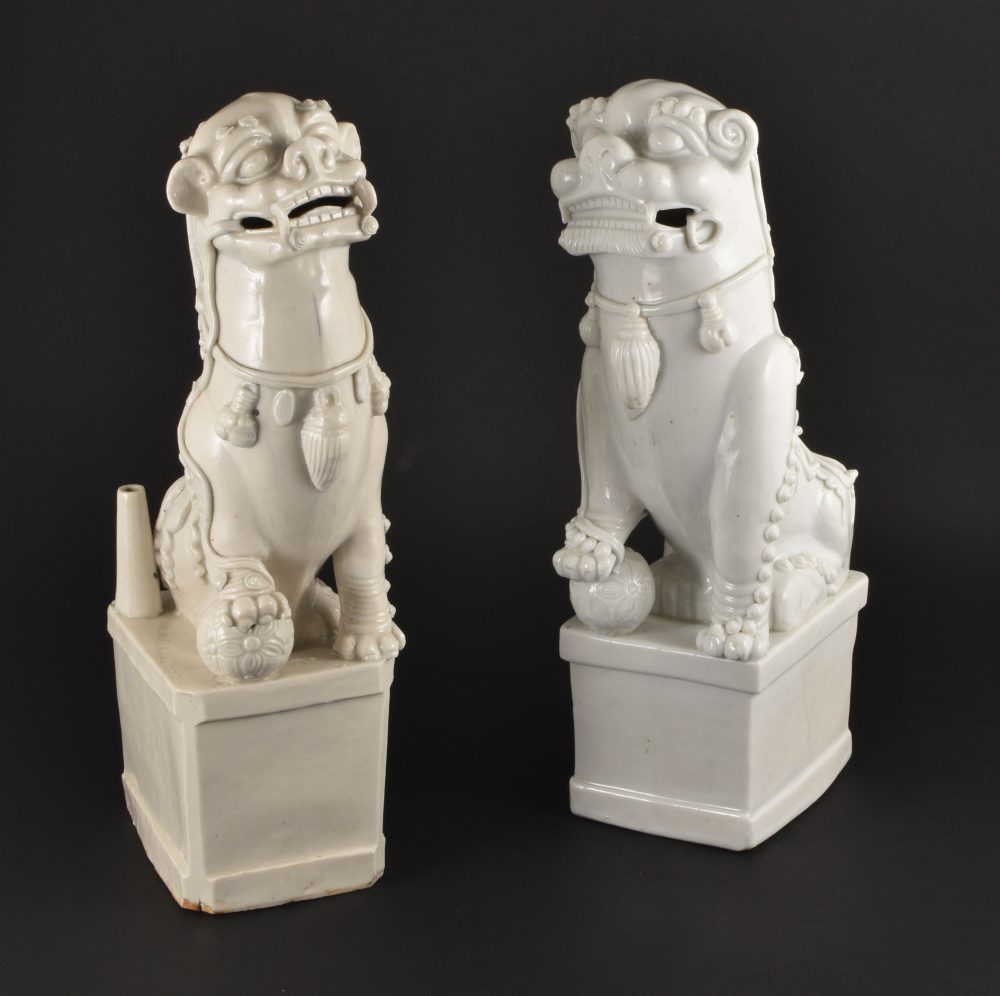
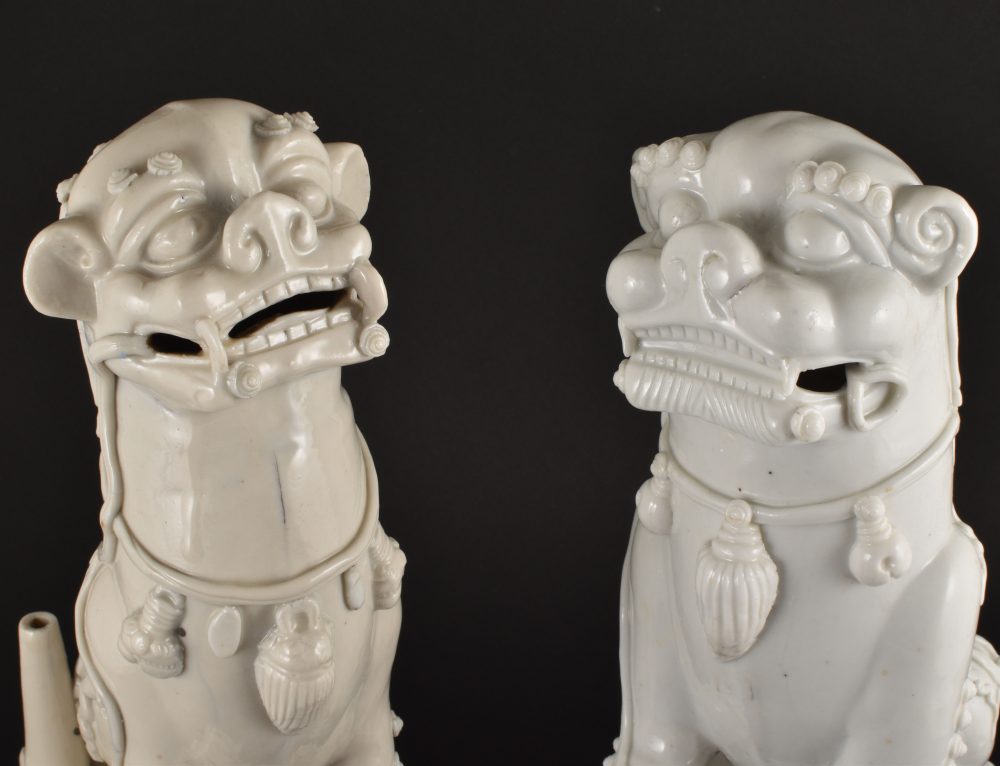
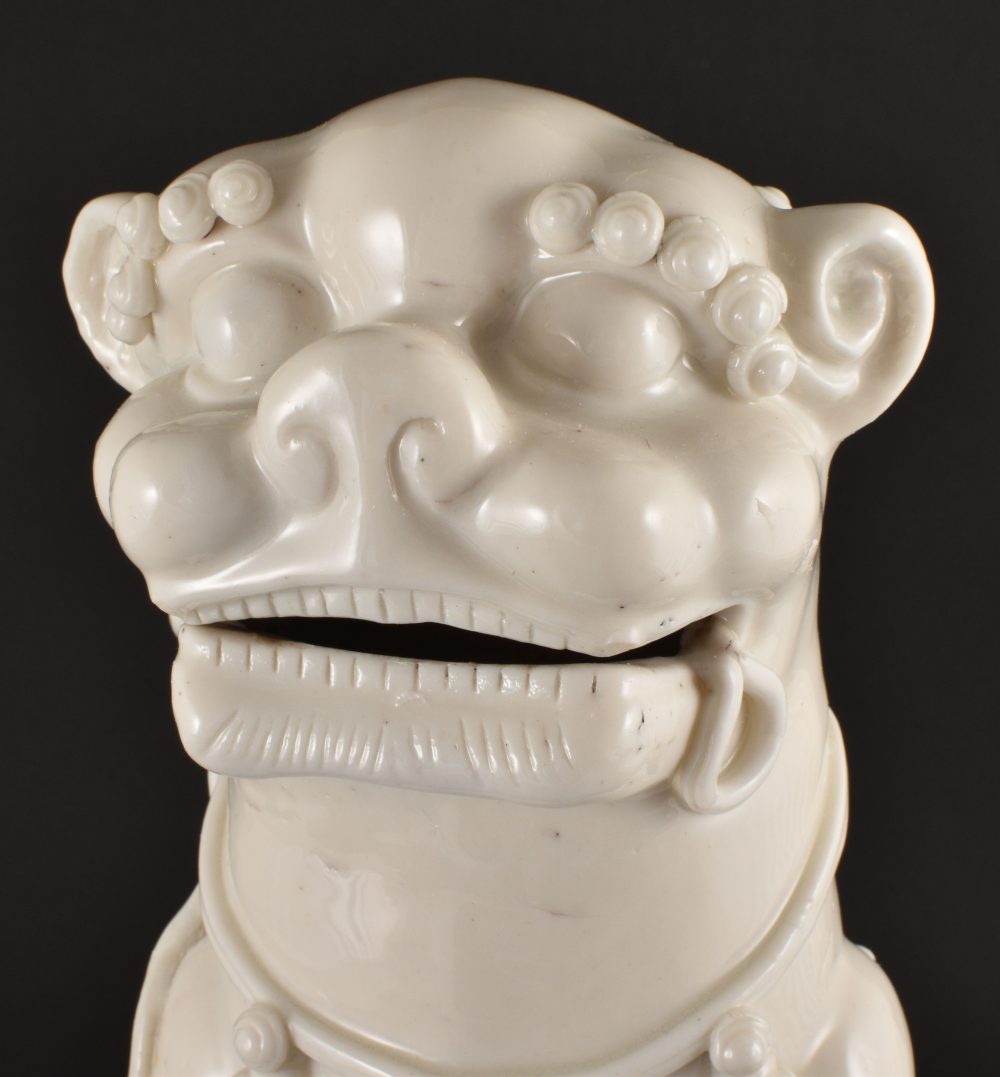
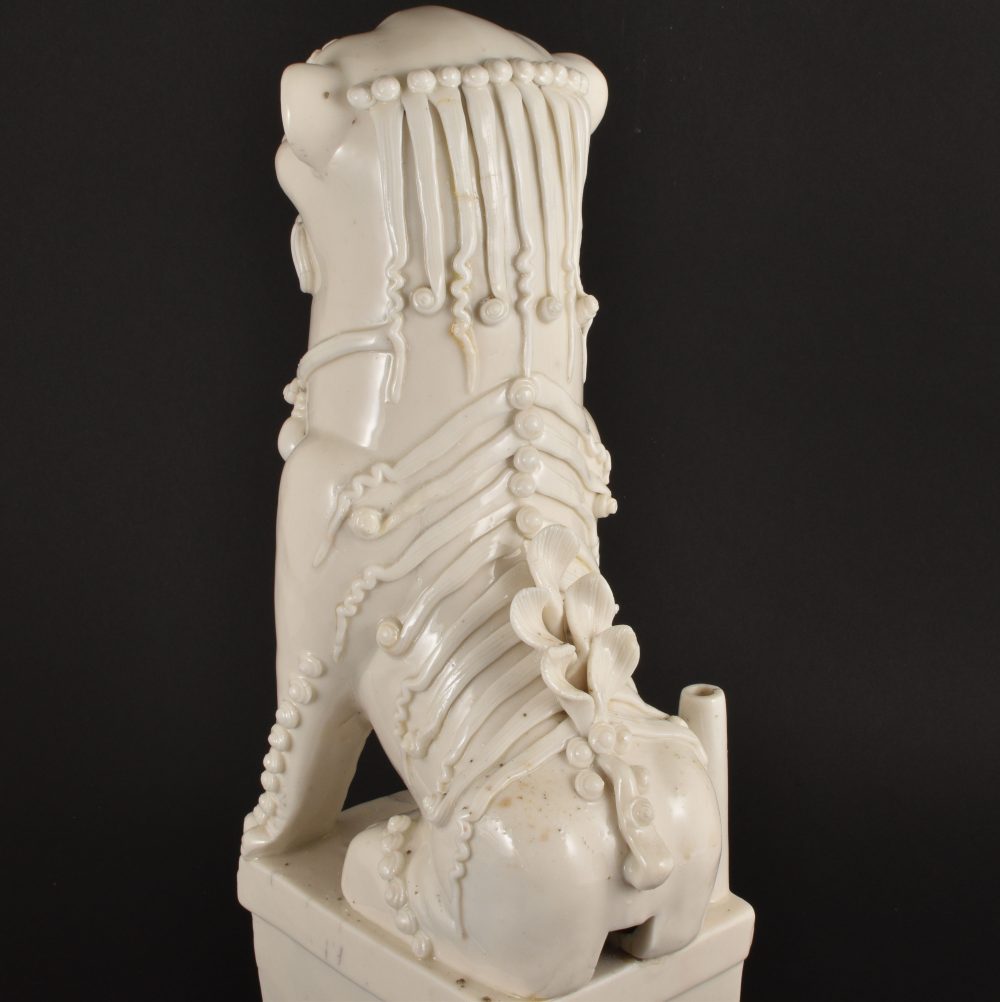
Four very large Chinese Blanc-de-Chine / Dehua Buddhist lions. Kangxi period
Sitting on a rectangular plinth with a wish granting ball under one paw and a ribbon in their jaws. Finished with an incense holder at the back and a tasseled collar around their neck that descends to a plumage on the rear.
- Country:
- China
- Period :
- Kangxi (1662-1722)
- Material:
- Porcelain
- Dimension:
- 13.38 / 14.56 in. (34 / 37 cm)
- Reference :
- C502
- Status:
- sold
Related works
For a large set of small buddhist lions, see Christie’s NYC, Chinese Export Art Featuring the Tibor Collection, Part II, 23 january 2020, lot 116.
Notice
Originally made for the domestic market in various size and glazes, Buddhistic lions became popular in Europe in the eighteenth century.
The lion is not indigenous to China, it was introduced throughout Indian Buddhism and became a classic theme in Chinese art. From the Ming dynasty, Buddhistic lions, often called Dogs of Fô or Dogs of Buddha, appear in Chinese art and are also used as “guards” of Buddhist temples. Buddhistic lions reached their zenith of popularity early on in the Kangxi period (1662-1722) as the interest in Buddhism showed a marked increase in China.
The Plentitude of these animated beasts at the time denoted their integral role in Chinese iconography. Symbolically the lions connote bravery and loyalty; these mythical creatures also appeared on military badges of the first and second rank.
Made to hold an incense stick or taper, they were often scattered on dining tables as decoration in Europe.




















